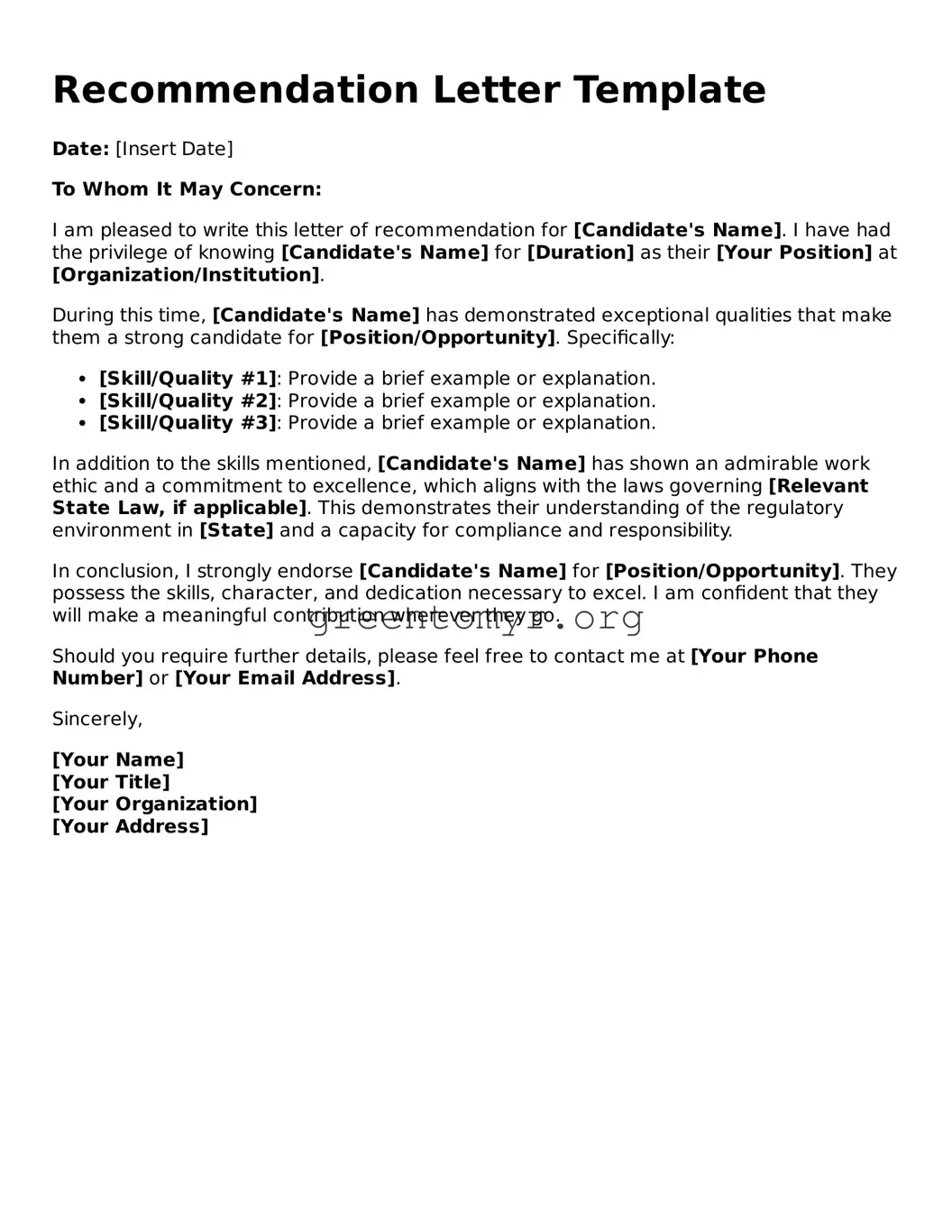Recommendation Letter Template
Date: [Insert Date]
To Whom It May Concern:
I am pleased to write this letter of recommendation for [Candidate's Name]. I have had the privilege of knowing [Candidate's Name] for [Duration] as their [Your Position] at [Organization/Institution].
During this time, [Candidate's Name] has demonstrated exceptional qualities that make them a strong candidate for [Position/Opportunity]. Specifically:
- [Skill/Quality #1]: Provide a brief example or explanation.
- [Skill/Quality #2]: Provide a brief example or explanation.
- [Skill/Quality #3]: Provide a brief example or explanation.
In addition to the skills mentioned, [Candidate's Name] has shown an admirable work ethic and a commitment to excellence, which aligns with the laws governing [Relevant State Law, if applicable]. This demonstrates their understanding of the regulatory environment in [State] and a capacity for compliance and responsibility.
In conclusion, I strongly endorse [Candidate's Name] for [Position/Opportunity]. They possess the skills, character, and dedication necessary to excel. I am confident that they will make a meaningful contribution wherever they go.
Should you require further details, please feel free to contact me at [Your Phone Number] or [Your Email Address].
Sincerely,
[Your Name]
[Your Title]
[Your Organization]
[Your Address]
